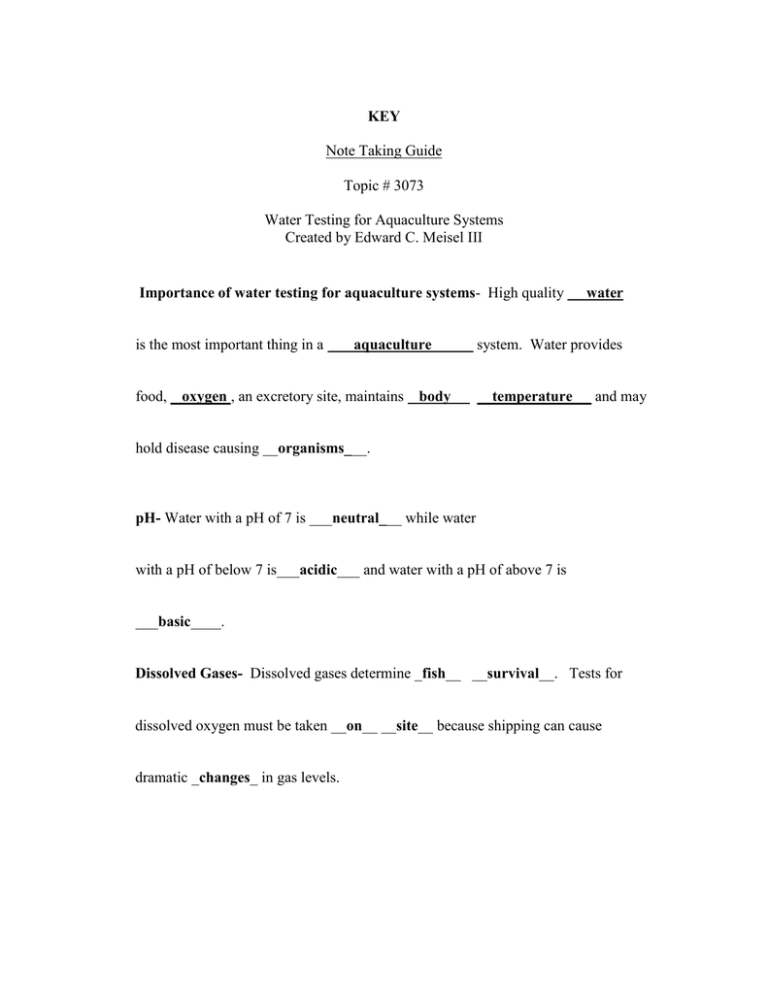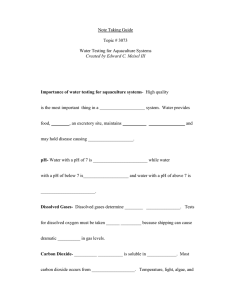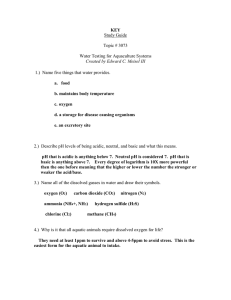Document 15565468
advertisement

KEY Note Taking Guide Topic # 3073 Water Testing for Aquaculture Systems Created by Edward C. Meisel III Importance of water testing for aquaculture systems- High quality is the most important thing in a aquaculture food, oxygen , an excretory site, maintains body water system. Water provides temperature and may hold disease causing __organisms___. pH- Water with a pH of 7 is ___neutral___ while water with a pH of below 7 is___acidic___ and water with a pH of above 7 is ___basic____. Dissolved Gases- Dissolved gases determine _fish__ __survival__. Tests for dissolved oxygen must be taken __on__ __site__ because shipping can cause dramatic _changes_ in gas levels. Carbon Dioxide- _Carbon_ __dioxide__ is soluble in __water__. Most carbon dioxide occurs from __respiration__. Temperature, light, algae, and ___population___ affect dissolved oxygen levels. ___Aerating___ water is a must in order to keep oxygen levels up and driving of carbon dioxide. Ammonia- Ammonia is tested with _test__ __kits___. Algae use ammonia as a nitrogen source for making __proteins__. The __majority__ of ammonia in water is present in the _non_-__toxic__ ionized form. __Ammonia__ is generally non-toxic to fish but should be monitored to make sure levels do not get too _high_. Hardness- Hardness of water is determined by the levels of __calcium__ and __magnesium__. The ideal level is between _30__ and __300__ mg/L. Testing Methods- The two most common methods are __colormetric__ and __electronic__. ___Colormetric___ uses a concentration reaction to show test colors that can be read on a scale. __Electronic__ testing is done with an electronic device that can give _accurate_ reading for all aspects of water quality. Most aquaculturists use _electronic_ testing.





